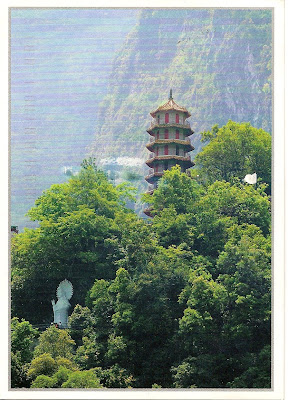
I guess you are never too young to enjoy the wide world of postcards. Today's mail brought two wonderful postcards from members of the Postcrossing Project. The one above (Moi) is from 14-year-old Piia of Finland. If you think she is too young to collect international postcards take a look at the beautiful postcard, below, of Taroko National Park. It comes from Postcrosser Jerry of Taiwan, age two. The message on the reverse side said his mom helps him collect cards. You can see an adorable picture of Jerry here.







